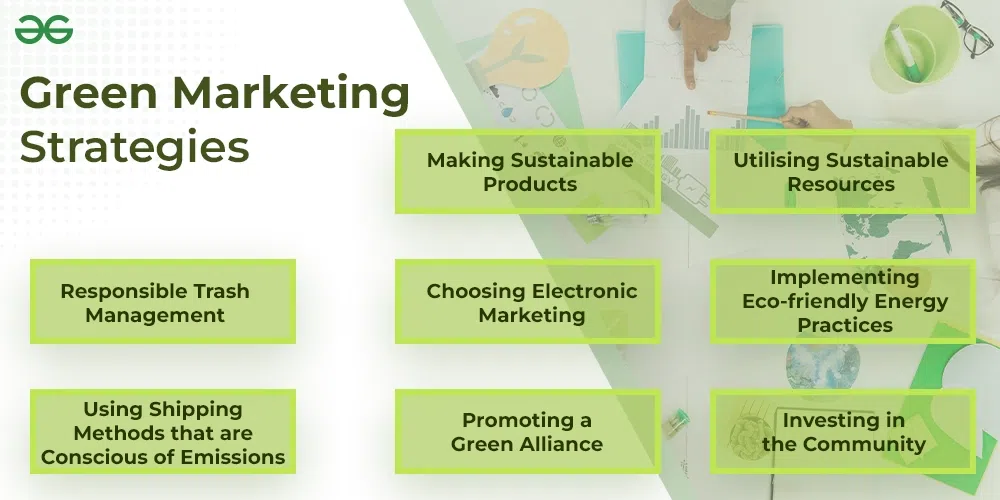
Reducing Your Business’s Carbon Footprint: Practical Steps
Reducing Your Business’s Carbon Footprint: Practical Steps
Are you ready to take the first step towards a greener future for your business? Reducing your business’s carbon footprint is not only a responsible choice, but it can also lead to cost savings and a positive reputation.
In this guide, we will provide you with practical steps to make a real difference.
Conducting a carbon footprint assessment will help you understand the current impact of your business activities.
From there, you can implement energy-saving measures, promote sustainable transportation options, and reduce waste through recycling programs.
Embracing sustainable supply chain practices and educating your employees on sustainability will further enhance your efforts.
Let’s dive in and start making a positive impact together!
Key Takeaways
– Conduct a thorough carbon footprint assessment to identify the main contributors to your business’s carbon footprint.
– Implement energy-saving measures such as using energy-efficient lighting options, installing smart thermostats, and using energy-efficient equipment and appliances.
– Promote sustainable transportation options like implementing public transit incentives, creating bike-friendly infrastructure, and exploring electric and hybrid vehicle options.
– Reduce waste and implement recycling programs by establishing a recycling program, educating employees on proper recycling practices, and implementing waste reduction strategies.
Conducting a Carbon Footprint Assessment
To accurately assess your business’s carbon footprint, you can start by conducting a comprehensive analysis of your energy usage and emissions. This assessment will provide you with valuable insights into the areas where you can make the most significant reductions.
Begin by gathering data on your energy consumption, including electricity, heating, and transportation. Look at your utility bills, fuel receipts, and any other relevant records. Once you have this information, calculate the total amount of energy you consume and convert it to carbon dioxide equivalent (CO2e) using emission factors. This will give you a baseline measurement of your carbon footprint.
Next, analyze your emissions from various sources. Consider the greenhouse gases emitted from your operations, such as carbon dioxide, methane, and nitrous oxide. Identify the main contributors to your carbon footprint, such as energy-intensive processes or inefficient equipment. This analysis will help you prioritize your efforts to reduce emissions.
Additionally, consider conducting a life cycle assessment (LCA) to evaluate the environmental impact of your products or services. This holistic approach will help you identify opportunities for improvement throughout the entire lifecycle, from raw material extraction to disposal.
Implementing Energy-Saving Measures
To reduce your business’s carbon footprint, implementing energy-saving measures is crucial.
Consider switching to efficient lighting options, such as LED bulbs, which use significantly less energy and last longer.
Additionally, installing a smart thermostat can help optimize your heating and cooling systems, reducing energy waste and lowering your carbon emissions.
Efficient Lighting Options
Choose energy-efficient lighting options to reduce your business’s carbon footprint. Implementing energy-saving measures like efficient lighting can significantly decrease the environmental impact of your business operations.
LED (light-emitting diode) bulbs are a popular choice for their long lifespan and low energy consumption. They use up to 80% less energy than traditional incandescent bulbs, resulting in reduced electricity bills and carbon emissions. Additionally, LED bulbs don’t contain harmful substances like mercury, making them safer for both the environment and human health.
Another option is compact fluorescent lamps (CFLs), which are also energy-efficient and have a longer lifespan than incandescent bulbs.
Smart Thermostat Installation
By installing a smart thermostat, you can effectively implement energy-saving measures to reduce your business’s carbon footprint.
A smart thermostat is a device that allows you to control the temperature of your business premises remotely and automatically adjust it based on your preferences and occupancy patterns.
This technology can significantly reduce energy waste by optimizing heating and cooling systems. Smart thermostats can also learn your daily routines and make adjustments accordingly, ensuring that you aren’t wasting energy when the premises are unoccupied.
Additionally, these thermostats can provide real-time energy usage data and insights, allowing you to identify areas where you can further optimize energy consumption.
Promoting Sustainable Transportation Options
When it comes to reducing your business’s carbon footprint, promoting sustainable transportation options is key.
Consider implementing public transit incentives to encourage employees to use buses or trains.
Creating bike-friendly infrastructure and supporting carpooling initiatives can also help reduce emissions and congestion.
Public Transit Incentives
Take advantage of the public transit incentives available to you to promote sustainable transportation options for your business.
Many cities and regions offer various incentives to encourage businesses and their employees to use public transportation. These incentives can include discounted or subsidized transit passes, tax credits, and even dedicated bus lanes or shuttle services.
By utilizing these incentives, you can’t only reduce your business’s carbon footprint but also save money on transportation costs.
Encourage your employees to take advantage of these incentives by promoting the benefits of public transit, such as reduced congestion and stress, as well as the positive impact on the environment.
Additionally, consider partnering with local transit agencies to further promote sustainable transportation options and explore the possibility of offering additional incentives or rewards for employees who choose to use public transit.
Bike-Friendly Infrastructure
You can further promote sustainable transportation options by implementing bike-friendly infrastructure. This can be done by creating designated bike lanes and providing secure bike parking facilities. By doing so, you can make it safer and more convenient for employees to choose biking as their preferred mode of transportation.

Encouraging employees to use bicycles as a means of commuting to work and reducing their carbon footprint is another effective strategy. Installing bike racks and showers at your workplace will also help facilitate bike commuting by providing a secure place to store bicycles and allowing employees to freshen up after their ride.
Additionally, consider offering incentives such as bike-sharing programs, bike maintenance workshops, or subsidies for purchasing bicycles. These initiatives can further encourage employees to adopt biking as a viable transportation option.
Carpooling Initiatives
To promote sustainable transportation options, consider implementing carpooling initiatives at your business. Carpooling not only reduces the number of vehicles on the road, but it also decreases carbon emissions and traffic congestion. Here are some practical steps to get started:
– Encourage employees to carpool by providing incentives such as preferred parking spots or discounted parking fees.
– Create a carpool matching program to help employees find potential carpool partners.
– Develop a designated carpool area where employees can easily meet and depart together.
– Use technology, such as carpooling apps or online platforms, to facilitate carpool coordination and communication.
– Promote carpooling through awareness campaigns, emphasizing the environmental and cost-saving benefits.
Reducing Waste and Implementing Recycling Programs
Implementing a recycling program in your business can significantly reduce waste and decrease your carbon footprint. By establishing a system for recycling paper, plastic, glass, and other materials, you can divert a substantial amount of waste from landfills. Encourage your employees to participate by placing clearly labeled recycling bins throughout your office or workspace. Make sure to educate your staff on what can and can’t be recycled to avoid contamination issues. Additionally, consider partnering with local recycling facilities or organizations that can assist with the collection and processing of recyclable materials.
Reducing waste goes beyond just recycling. Look for ways to minimize the amount of waste generated in your business operations. For example, you can encourage employees to use reusable water bottles and coffee cups instead of disposable ones. Implementing electronic document management systems can also help reduce paper waste. Furthermore, consider donating excess or unused supplies to local organizations rather than throwing them away.
To further reduce waste, assess your procurement practices. Look for suppliers that prioritize sustainable packaging and offer products made from recycled materials. By being conscious of the entire lifecycle of your products, you can minimize waste generation and contribute to a more circular economy.
Embracing Sustainable Supply Chain Practices
By prioritizing sustainable sourcing and partnering with environmentally responsible suppliers, you can effectively embrace sustainable supply chain practices. Here are some practical steps you can take:
– Conduct Supplier Audits: Regularly assess and evaluate your suppliers to ensure they align with your sustainability goals. Look for suppliers who prioritize ethical practices, minimize waste, and reduce their carbon emissions.
– Optimize Transportation: Implement strategies to reduce transportation-related emissions. This can include consolidating shipments, optimizing routes, and utilizing more fuel-efficient vehicles. Consider partnering with logistics companies that offer green transportation options.
– Promote Local Sourcing: Support local businesses and reduce your carbon footprint by sourcing materials and products from nearby suppliers. This reduces transportation distances and supports the local economy.
– Encourage Packaging Efficiency: Work with suppliers to minimize packaging waste and encourage the use of eco-friendly materials. Explore alternative packaging solutions, such as biodegradable or recyclable materials, to reduce the environmental impact.
– Collaborate on Sustainability Initiatives: Engage in dialogue and collaboration with suppliers to create joint sustainability initiatives. This can include sharing best practices, setting sustainability targets, and working together to develop innovative solutions.
Educating and Engaging Employees in Sustainability Efforts
Involve your employees in sustainability efforts by providing comprehensive training and fostering a culture of environmental responsibility. Educating and engaging your employees in sustainability efforts is crucial for achieving meaningful results in reducing your business’s carbon footprint. Start by conducting regular training sessions to educate your employees about the importance of sustainability and the specific actions they can take to contribute to your environmental goals.
During these training sessions, provide information about sustainable practices such as energy conservation, waste reduction, and responsible resource usage. Encourage your employees to adopt these practices both at work and in their personal lives. Additionally, highlight the positive impact their actions can have on the environment and emphasize the role they play in creating a sustainable future.
To further engage your employees, consider implementing sustainability initiatives that encourage participation and collaboration. For example, organize team challenges or competitions that promote eco-friendly behaviors. Recognize and reward employees who consistently demonstrate a commitment to sustainability.
Moreover, foster a culture of environmental responsibility by incorporating sustainability into your company’s values and mission. Encourage open discussions about sustainability and provide opportunities for employees to contribute their ideas and suggestions. By involving your employees and creating a supportive environment, you can harness their collective efforts to reduce your business’s carbon footprint and make a positive impact on the planet.
Frequently Asked Questions
How Can I Calculate the Carbon Footprint of My Business?
To calculate your business’s carbon footprint, start by assessing the energy consumption of your operations, including electricity and fuel usage. Then, consider the emissions produced by transportation, waste management, and any other relevant activities.
Use online carbon calculators or consult with sustainability experts to determine the specific formulas and data needed for accurate calculations.
What Are Some Energy-Saving Measures That Can Be Implemented in a Business Setting?
To reduce your business’s carbon footprint, implement energy-saving measures. Start by upgrading to energy-efficient lighting and equipment. Encourage employees to turn off lights and equipment when not in use.
Install programmable thermostats and use natural ventilation whenever possible. Consider switching to renewable energy sources like solar panels. Conduct energy audits to identify areas of improvement.
Implement a telecommuting policy to reduce commuting emissions. Encourage carpooling and provide incentives for using public transportation.
How Can I Encourage My Employees to Choose Sustainable Transportation Options?
To encourage your employees to choose sustainable transportation options, you can start by providing incentives such as:
– Subsidized public transportation passes or bike-sharing memberships.
– Establishing a carpooling program or providing designated parking spots for carpoolers.
Promote the benefits of sustainable transportation, such as:
– Reducing emissions.
– Saving money on fuel.
Additionally, provide facilities for employees to:
– Store and maintain bicycles.
– Offer flexible work schedules to accommodate alternative commuting methods.
What Are Some Effective Strategies for Reducing Waste and Implementing Recycling Programs in a Business?
To reduce waste and implement recycling programs in your business, there are several effective strategies.
First, you can start by conducting a waste audit to identify areas of improvement.
Then, set up recycling stations throughout your premises and clearly label them.
Encourage employees to recycle by providing educational materials and incentives.
Additionally, you can work with suppliers to reduce packaging waste and explore composting options for organic waste.
Regularly monitor and evaluate the effectiveness of your recycling programs to ensure ongoing success.
How Can Businesses Ensure That Their Supply Chain Practices Align With Sustainability Goals?
To ensure that your business’s supply chain practices align with sustainability goals, there are several steps you can take.
First, conduct a comprehensive assessment of your suppliers to determine their environmental practices.
Then, establish clear guidelines and expectations for sustainability in your supply chain.
Encourage your suppliers to adopt eco-friendly practices and offer incentives for compliance.
Additionally, consider sourcing locally to reduce transportation emissions.
Regularly monitor and evaluate your supply chain to ensure continued alignment with your sustainability goals.
Conclusion
So there you have it, reducing your business’s carbon footprint isn’t only possible, but also practical.
By conducting a carbon footprint assessment, implementing energy-saving measures, promoting sustainable transportation options, reducing waste, embracing sustainable supply chain practices, and educating and engaging employees in sustainability see it here efforts, you can make a significant impact.
Take these practical steps and contribute to a greener future for your business and the planet.


